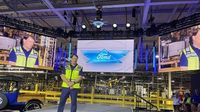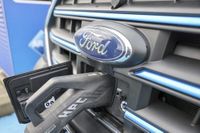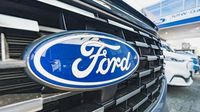On August 12, 2025, Ford Motor Company announced a sweeping new plan to revive its electric vehicle (EV) ambitions, unveiling a $5 billion investment aimed at transforming both its manufacturing process and product lineup. The move marks what CEO Jim Farley called “the most radical redesign of how we manufacture cars since the Model T,” but the announcement has been met with both hope and skepticism from investors, analysts, and industry observers.
Ford’s new initiative centers on the creation of a “universal EV platform” that will underpin a family of affordable, software-defined electric vehicles. The first product to emerge from this platform is slated to be a midsize, four-door electric pickup truck, priced from about $30,000, and scheduled to hit showrooms in 2027. According to Ford, the new truck will offer more passenger space than a Toyota RAV4 and performance on par with a Mustang EcoBoost—ambitious claims for a company whose recent EV efforts have stumbled.
To bring this vision to life, Ford will pour nearly $2 billion into revamping its Louisville Assembly Plant in Kentucky, converting a facility that has produced gas-powered vehicles for over seventy years into a state-of-the-art EV assembly plant. An additional $3 billion will go toward the BlueOval Battery Park Michigan for the production of prismatic lithium-iron-phosphate (LFP) batteries, using technology licensed from China’s CATL. Combined, the investments are expected to create or secure nearly 4,000 U.S. jobs, including 2,200 hourly positions at the Louisville plant, though Ford acknowledged that new efficiencies could lead to buyouts or transfers for 600 workers currently employed there, as reported by Axios.
But investors were not immediately impressed. According to 24/7 Wall St., Ford’s stock fell following the announcement, with trading volume below the 90-day average. The plan, described as Ford’s “next Model T moment,” was overshadowed in the news cycle by stories about competitors’ EV strategies, and skepticism abounded regarding whether Ford could deliver on its promises, especially given its recent track record.
Over the past several years, Ford’s Model E division has struggled mightily. The company has lost $12 billion from the division since early 2023, including $2.2 billion in the first half of this year alone. Analysts at Fortune estimate that Ford is on track to lose $4 billion from Model E by the end of 2025. The Mustang Mach-E and F-150 Lightning, once heralded as successes, have suffered from production cuts and declining sales. In July 2025, Ford sold only 2,831 F-150 Lightnings and 5,308 Mustang Mach-Es. Meanwhile, General Motors capitalized on Ford’s misfortunes, posting a 111% increase in EV sales last quarter and securing the number two spot in U.S. EV sales behind Tesla.
Ford’s new manufacturing approach is nothing short of a gamble. The traditional moving assembly line, a staple of automotive production since Henry Ford’s day, is being replaced by what the company calls an “assembly tree.” In this system, three specialized sub-assemblies are built in parallel before being united in final assembly. This, Ford claims, will cut assembly time by up to 40%, reduce the number of parts by 20%, and decrease the number of employee workstations by 40%. Doug Field, Ford’s chief EV, digital, and design officer, explained, “We applied first-principles engineering, pushing to the limits of physics to make it fun to drive and compete on affordability… This isn’t a stripped-down, old-school vehicle.”
The innovation extends to the battery as well. The cobalt-free, nickel-free LFP battery pack will double as the vehicle’s floor, lowering the center of gravity, improving handling, and increasing cabin space. It also reduces the number of fasteners by 40% and enables a 15% faster assembly time compared to current processes, according to ESG News. Ford expects these breakthroughs to result in significant gains in quality and cost efficiency. “We expect ergonomic breakthroughs and complexity reduction… will flow through to significant quality and cost wins,” said Bryce Currie, Ford’s vice president of Americas Manufacturing.
Yet, the road ahead is fraught with challenges. The new truck won’t be available until 2027, a timeline considered slow in an industry where competitors are releasing new EV models annually. Morningstar equity strategist David Whiston cautioned, “If the vehicles don’t appeal due to being EVs, then billions will be wasted. That’s why you need a great product, great range, and lower battery cost and vehicle manufacturing techniques.” He added, “The challenge is, do you have a great product or not? [It’s] hard to get excited about a vehicle you can’t see yet.”
Ford’s leadership is well aware of the stakes. At the Kentucky event, Jim Farley acknowledged the risks, stating, “We are doing so many new things I can’t tell you with 100% certainty that it will all go just right.” He emphasized the company’s commitment to breaking the cycles of “idle plants, laid-off workers, and red ink” that have plagued Detroit automakers’ attempts at affordable vehicles in the past. “We have all lived through far too many ‘good college tries’ by Detroit automakers to make affordable vehicles that ends up with idled plants, layoffs and uncertainty. So, this had to be a strong, sustainable and profitable business,” Farley said, as quoted by Axios.
Competition from abroad looms large, particularly from China, whose EV makers have become global leaders in cost and innovation. Ford’s new platform is explicitly designed to match Chinese vehicles on price and features, while keeping manufacturing firmly rooted in America. Kentucky Governor Andy Beshear praised the investment as “one of the largest on record in our state” and a major boost to Kentucky’s role in EV innovation.
Despite the bold rhetoric and substantial investment, doubts persist. Ford’s Universal EV Production System is untested, and its promise of a $30,000 pickup may be difficult to keep, given the company’s history of shifting price targets. Moreover, as 24/7 Wall St. noted, the plan’s job preservation language—“securing” 2,200 jobs—suggests that layoffs may still be on the horizon if things don’t go as planned.
Ultimately, Ford’s future in the electric vehicle race hinges on its ability to deliver on these ambitious promises. As Roger Atkins of Electric Vehicles Outlook told Fortune, “EV progress is exponential, so a strategy five years ago that may have disappointed is in an entirely different global context today. If it does fail, it could be terminal for the brand.”
As the dust settles on Ford’s announcement, the automotive world is watching closely. If the company can pull off this transformation, it could rewrite its legacy for the electric age. If not, it risks joining the long list of bold but failed experiments that have defined Detroit’s recent history.


